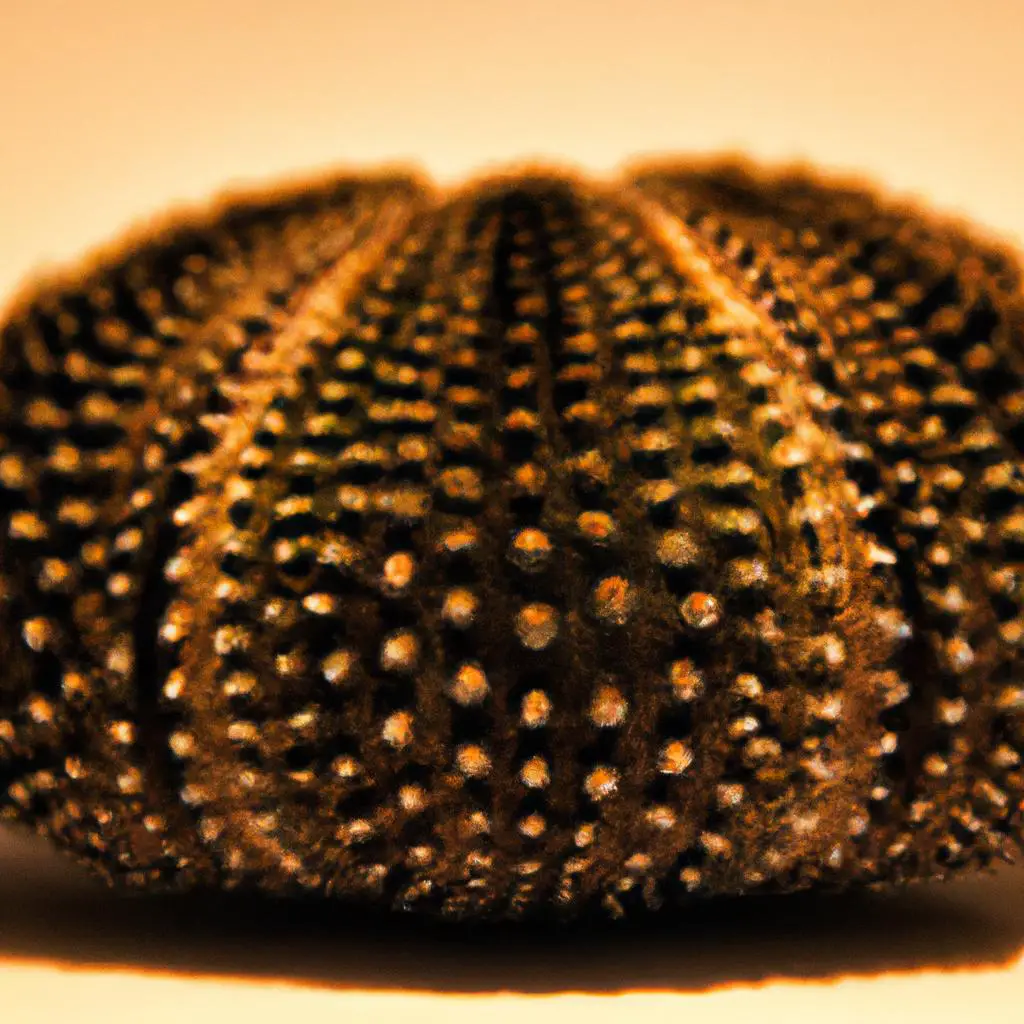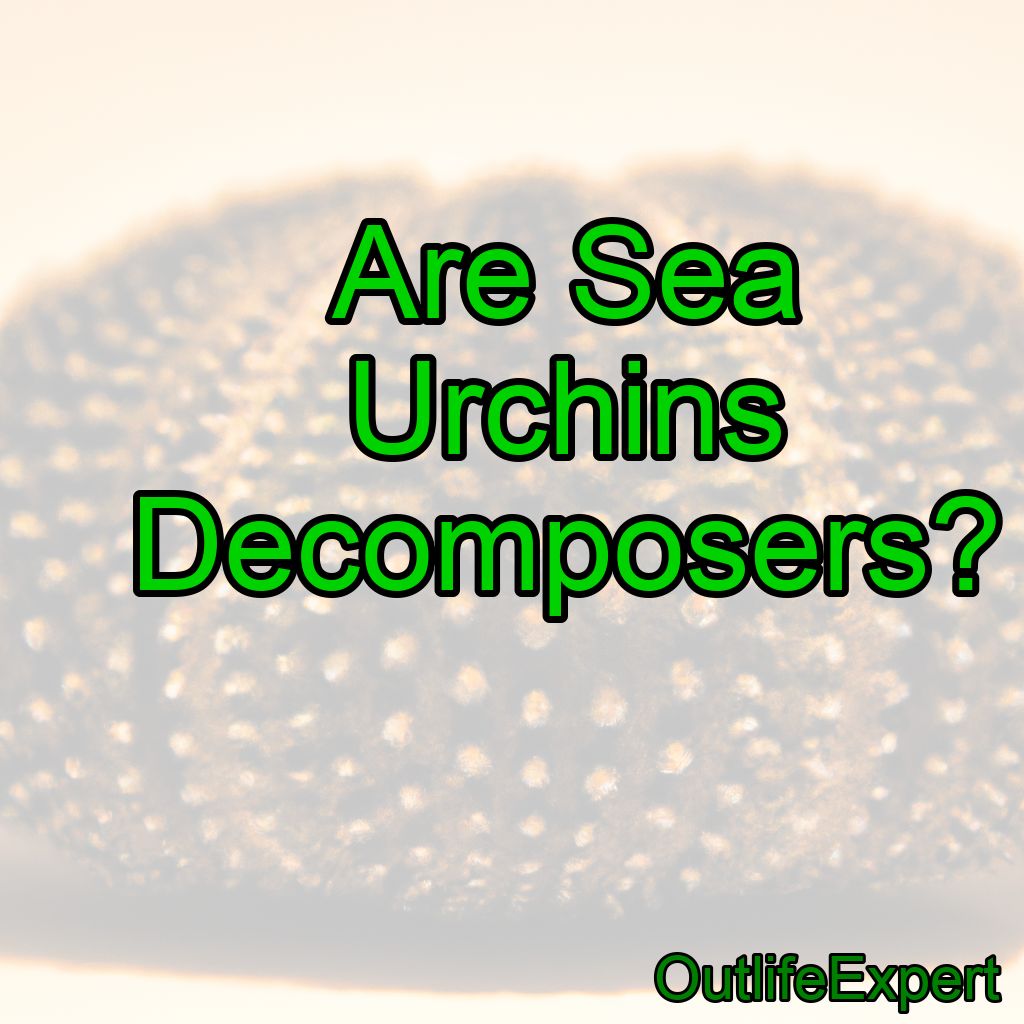Are sea urchins decomposers?
The short answer to this question is no. Sea urchins are not decomposers; they are primarily herbivores and occasionally omnivores. But they can act as detritivores.
However, they do play an essential role in the marine ecosystem, which involves breaking down and recycling organic matter.
In this blog post, we will explore the fascinating world of sea urchins, their feeding habits, and their critical role in maintaining a balanced marine ecosystem.
What are Sea Urchins?
Anatomy and Physiology
Sea urchins are marine invertebrates belonging to the phylum Echinodermata and the class Echinoidea.
They are characterized by a unique, five-fold radial symmetry, a globular body enclosed in a rigid exoskeleton called a test, and numerous spines that cover their body. The test is composed of interlocking plates made of calcium carbonate, which provide protection and support to the animal.
The spines of sea urchins serve multiple purposes, including locomotion, defense against predators, and feeding.
The spines are attached to the test by ball-and-socket joints, which allow them to move in various directions. Additionally, sea urchins have specialized tube feet, which they use for locomotion and to manipulate objects in their environment.
Reproduction and Life Cycle
Sea urchins reproduce through external fertilization, where the female releases her eggs and the male releases his sperm into the water column. Fertilized eggs develop into planktonic larvae, which eventually metamorphose into juvenile sea urchins and settle on the ocean floor.
The life cycle of a sea urchin consists of several stages, starting from the embryo, progressing through the larval stage, and finally reaching the adult stage. Depending on the species and environmental conditions, sea urchins can live for several years or even decades.

Sea Urchins as Herbivores
Diet and Feeding Behavior
The primary diet of sea urchins consists of algae, including both macroalgae (seaweeds) and microalgae (phytoplankton). They use their specialized mouthparts, known as Aristotle’s lantern, to scrape algae off rocks and other surfaces. In addition to algae, sea urchins also consume detritus, which consists of dead and decaying organic matter.
Although algae are their primary food source, some species of sea urchins are also known to be opportunistic feeders. This means they will occasionally consume other food items, such as small invertebrates like mussels, barnacles, and even dead fish. However, these items are typically not a significant part of their diet.
Ecological Role as Herbivores
As herbivores, sea urchins play a crucial role in maintaining the balance of marine ecosystems. By consuming algae, they help regulate algal growth and prevent algal blooms, which can be detrimental to marine life. Additionally, their feeding activity helps create habitats for other marine organisms by clearing spaces on rocks and other surfaces.
In some cases, however, sea urchins can have negative impacts on marine ecosystems. For example, when their populations become too large or are not kept in check by predators, they can overgraze on kelp and other algae, leading to the formation of “urchin barrens.” These areas are devoid of vegetation and offer little habitat for other marine species.
Sea Urchins as Decomposers
Differences between Decomposers and Sea Urchins
Decomposers are organisms that break down dead organic matter and recycle nutrients back into the ecosystem. Typical decomposers in marine ecosystems include bacteria, fungi, and some invertebrates like worms and crustaceans.
These organisms use enzymes to break down complex organic molecules into simpler compounds, which can then be used by other organisms in the food web.
While sea urchins do consume detritus and help recycle nutrients in the marine ecosystem, they are not considered decomposers because they do not break down organic matter using enzymes. Instead, they consume and digest detritus, which means that they are more accurately classified as detritivores.
Detritivores and Their Role in Marine Ecosystems
Detritivores play an essential role in breaking down and recycling organic matter in marine ecosystems.
By consuming detritus, they help break down large particles into smaller pieces, making it more accessible to decomposers like bacteria and fungi.
This process is critical for maintaining the nutrient cycle in marine environments, as it ensures that nutrients locked in dead organic matter are released back into the ecosystem.
Conclusion
In conclusion, sea urchins are not decomposers, but they do play an essential role in the marine ecosystem as herbivores and detritivores. Here are 10 fascinating facts about sea urchins and their ecological role:
1. Sea urchins belong to the phylum Echinodermata and the class Echinoidea.
2. They are characterized by a unique, five-fold radial symmetry and a globular body enclosed in a rigid exoskeleton called a test.
3. Sea urchins have numerous spines that serve multiple purposes, including locomotion, defense, and feeding.
4. They reproduce through external fertilization, and their life cycle consists of several stages, from embryo to adult.
5. The primary diet of sea urchins consists of algae, including both macroalgae and microalgae.
6. They use their specialized mouthparts, known as Aristotle’s lantern, to scrape algae off rocks and other surfaces.
7. As herbivores, sea urchins play a crucial role in maintaining the balance of marine ecosystems by consuming algae and preventing algal blooms.
8. Sea urchins are not decomposers, but they do consume detritus and help recycle nutrients in the marine ecosystem, making them detritivores.
9. Detritivores play an essential role in breaking down and recycling organic matter in marine ecosystems, ensuring that nutrients locked in dead organic matter are released back into the ecosystem.
10. Sea urchins are fascinating creatures that play a vital role in maintaining the health and balance of the world’s oceans.
So, while we cannot label sea urchins as decomposers, their ecological role is no less critical to the health and balance of marine ecosystems. Their unique feeding habits and ecological roles make them fascinating creatures that deserve our attention and protection.
FAQs
What sea plant is a decomposer?
Seaweed is not a decomposer, but it does play an important role in nutrient cycling as it can break down organic matter and release nutrients back into the ecosystem.
What are 3 decomposers in the deep sea?
Three decomposers in the deep sea are bacteria, fungi, and crustaceans such as amphipods and isopods.
What is a decomposer example food web?
A decomposer example food web is a type of food web that shows the flow of energy and nutrients between decomposers and other organisms in an ecosystem. Decomposers, such as bacteria and fungi, break down dead organic matter and recycle nutrients back into the ecosystem, making them essential for maintaining the health and balance of an ecosystem. In a decomposer example food web, decomposers are shown interacting with primary producers, herbivores, and carnivores, illustrating the important role they play in sustaining life in an ecosystem.
Are sea urchins consumers or decomposers?
Sea urchins are considered to be consumers as they feed on algae, kelp, and other marine organisms, rather than breaking down dead organic matter as decomposers do.
What are 5 decomposers in the ocean?
Some decomposers in the ocean include bacteria, fungi, protozoa, detritivores (such as crabs and shrimp), and certain species of worms.
What is a decomposer in an ocean food web?
A decomposer in an ocean food web is an organism that breaks down dead organic matter and recycles nutrients back into the ecosystem. Examples of decomposers in the ocean include bacteria, fungi, and some species of crustaceans and mollusks.





